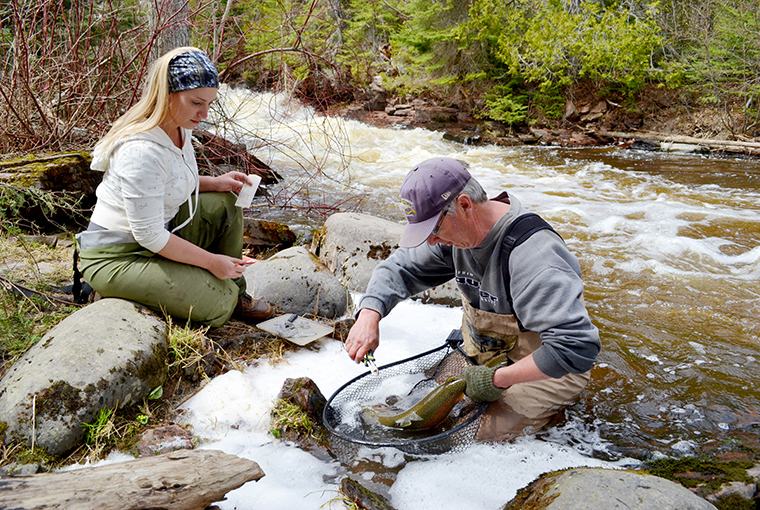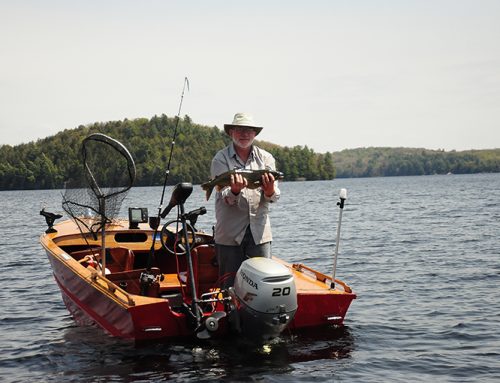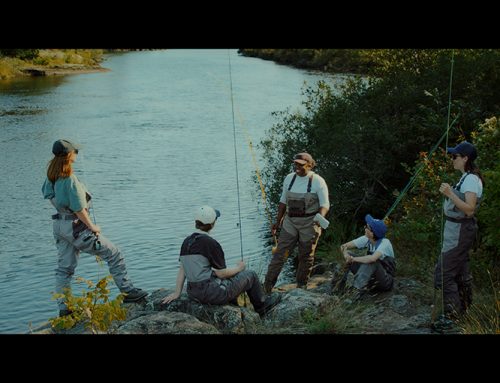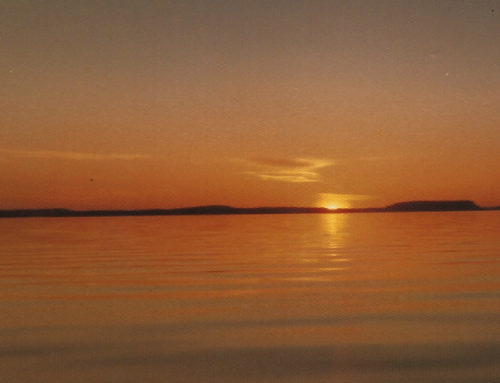
I knew very little about steelhead angling when I first hiked into Portage Creek at age 18 along-side family friend and then-Ministry of Natural Resources (MNR) employee Jon George, who was working on a key research project. Fast forward 20 some years, and I am still making the hike.
This important tributary flows into Lake Superior’s Black Bay some 40 kilometres east of Thunder Bay. In 1994, when the area’s steelhead fishery was showing signs of overharvest, a landowner posted a one-kilometre stretch of land below a small waterfall on Portage as private property, preventing angling. This created an opportunity for the ministry to conduct a research study with the primary focus of monitoring the steelhead population post exploitation.
The North Shore Steelhead Association (NSSA) and the ministry worked together on this long-term project which created an “index stream” for steelhead monitoring on Portage and other Black Bay tributaries.
Portage Creek fish tell a tale
To conduct this study, volunteer anglers and ministry staff caught steelhead using traditional angling methods. Fish were sampled, sex and length documented, scale samples taken, and colour-coded tags were sewn onto the dorsal fins. Fin clips unique to the year were also applied.
What the research reveals is that the steelhead population has shifted dramatically over time. The 1992 population was 500, spiking to a high of 2,000 in 2004. Then, things started to decline sharply, and in 2013 the population estimate dropped to 400. With nothing changing as far as angling harvest goes, this was an interesting and concerning shift. Anglers in all Black Bay tributaries, rivers that were traditionally excellent steelhead fisheries, started to see a sharp decline in fish numbers.
Anglers knew populations had dropped, and the fishery was changing, but the data from Portage confirmed the trend.
By 2018, there were fewer than 150 adult steelhead remaining in the spring spawning population. Since then, the population has remained low. There is very little recruitment, and the population is weighted towards older fish. Steelhead spend one to two years in the stream before migrating (smolting) out into Black Bay. After a year or two, fish mature and return to spawn in Portage for the first time. The study showed poor survival of immature steelhead in Black Bay over the past 15 years. This decline wasn’t experienced in nearby Nipigon Bay and Thunder Bay, and was seemingly isolated to Black Bay.
The rise of perch and walleye
Around the time of the steelhead decline, perch and walleye populations rose. Walleye and perch in Black Bay had suffered significantly over the years, mainly due to commercial harvest, but have made a significant comeback since the mid 2000s.
The data showed that steelhead that spent two years in the stream before moving into Superior (as opposed to fish that only stayed for one year) stood a better chance of surviving. These fish are bigger. Black Bay produced enormous perch, and regularly coughs up giant walleye. Navigating these predator-filled waters is challenging for steelhead smolts, and is the likely reason many one-stream-year fish aren’t surviving.
Portage hosts a healthy population of brook trout, and in recent years we seem to catch more. The biggest brook trout that was tagged was later caught a remarkable distance away, in a tributary north of Sault Ste Marie.
Portage Creek holds a special place in my heart, and even with limited fish numbers, this is a trip I try to do each year. It is an adventure, with the added bonus of spending the day on the water with a long-time friend, soaking up some of his steelhead knowledge.
Taking part in this study was drastically different prior to the decline; a day in the early 2000s may have yielded 50 fish (a fun but tiring day). In recent years, we were happy to catch two or three a day. If we got five, it was nearly cause for celebration.
Originally published in the Spring 2024 issue of Ontario OUT of DOORS






Leave A Comment